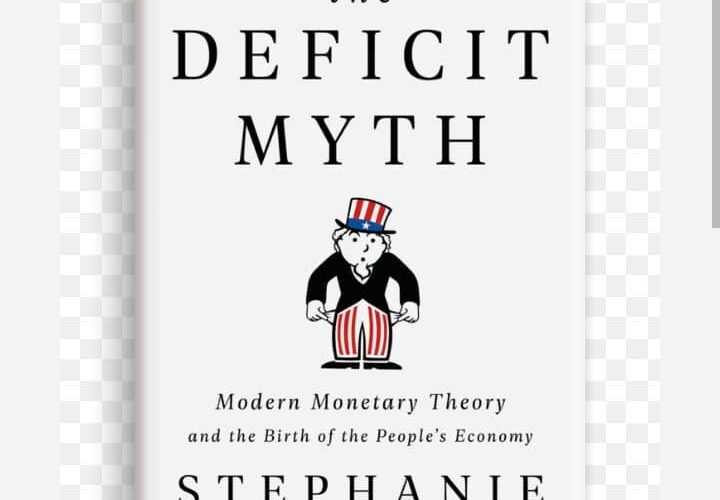Modern Monetary Theory in Sub-National Practice: Governor Alex Otti’s Bismarckian Transformation of Abia State’s Fiscal Governance
1 Introduction: Otti’s Abia Revolution—A Case Study in Pragmatic Economic Transformation
The economic transformation of Abia State under Governor Alex Otti represents one of Africa’s most compelling case studies in pragmatic sub-national governance, offering profound insights for scholars and practitioners of Stephanie Kelton’s Modern Monetary Theory (MMT). When Dr. Alex Otti, a former banker and economist, assumed office in 2023, he inherited a state grappling with formidable challenges including massive debt burdens, crumbling infrastructure, systemic corruption, and virtually non-existent public services. Yet, within two years, Abia has emerged as Nigeria’s top performer in fiscal management, achieving a record 57.2% reduction in domestic debt while simultaneously ramping up unprecedented infrastructure investment. This remarkable turnaround presents a fascinating opportunity to examine how MMT principles interact with the political and constitutional constraints of sub-national governance, while simultaneously echoing the pragmatic statecraft of Otto von Bismarck in its instrumental use of economic policy for social stability and development.
Otti’s administration exemplifies what might be termed applied MMT within a constrained sub-national context, demonstrating how the principles of functional finance can be adapted to realities of Nigeria’s federal system where states lack currency sovereignty but can exercise considerable fiscal innovation. Like Bismarck’s 19th century reforms, Otti’s approach reflects a pragmatic, non-ideological focus on outcomes rather than orthodoxies, leveraging state capacity to achieve both economic growth and social stability. This analysis explores the synergies between Otti’s fiscal policies and MMT principles, examining how Abia State has become a laboratory for testing innovative approaches to public finance that challenge conventional wisdom about debt, deficits, and the role of government in economic development.
2 Abia’s Economic Context and Governance Framework
2.1 The Pre-Otti Economic Landscape
Abia State, located in Nigeria’s southeastern region, possesses significant economic potential with its vibrant commercial city of Aba known as Japan of Africa for its renowned manufacturing and artisan capabilities, and substantial oil resources that qualify it as an oil-producing state. Despite these advantages, the state faced severe governance challenges prior to Otti’s administration including infrastructure deficits particularly in roads and power supply, inefficient revenue collection systems, mounting debt burdens, and widespread corruption that undermined public trust. The state’s industrial sector, particularly in Aba, struggled with inadequate power supply, forcing businesses to rely on expensive generators that increased production costs and reduced competitiveness.
The political context of Otti’s election is significant as he ran on the Labour Party ticket, breaking the dominance of the People’s Democratic Party that had governed the state for years. His victory reflected public disillusionment with previous administrations and desire for technocratic leadership capable of addressing the state’s developmental challenges. As a former banker with expertise in economics and finance, Otti brought a distinctive approach to governance, emphasizing technical competence, data-driven decision making, and financial discipline. His administration represents a fascinating case of how technocratic leadership can transform public finance management even in challenging institutional environments.
2.2 Otti’s Governance Philosophy and Approach
Governor Otti’s governance philosophy combines fiscal conservatism in management of resources with developmental activism in pursuing public goods and infrastructure. This approach is characterized by several key elements beginning with an emphasis on technical expertise in economic management, exemplified by his appointment of professionals with private sector experience and establishment of an Economic Management Team. Additionally, his administration demonstrates a commitment to transparency and accountability in public finance, though this has been questioned by opposition voices. Furthermore, Otti maintains a pragmatic approach to policy that prioritizes outcomes over ideological consistency, and finally, he has instilled a sense of urgency in execution, as reflected in his charge to executive council members to approach governance with urgency.
This governance approach reflects what might be termed developmental pragmatism, representing a focus on practical solutions to developmental challenges rather than adherence to ideological orthodoxies. In this respect, Otti’s approach echoes Bismarck’s Realpolitik, adapting strategies to circumstances rather than imposing ideological templates. As Otti stated during his executive council retreat, this administration is not going to be judged by the mediocre standards of the past administration because we were elected to raise the bar and raise it very very high. This commitment to raising governance standards has been a driving force behind the administration’s fiscal policies and reform initiatives.
3 Modern Monetary Theory: Theoretical Framework and Sub-National Applications
3.1 Core Principles of MMT

Modern Monetary Theory, as articulated by Stephanie Kelton in The Deficit Myth, challenges conventional understandings of government finance through several key principles. First, it distinguishes between currency issuers meaning sovereign governments with control over their currency and currency users including households, businesses, and sub-national governments, arguing that financial constraints on these entities differ fundamentally. Second, it argues that for currency-issuing governments, financial constraints are largely self-imposed, with the real constraints being inflationary pressures arising from demand exceeding productive capacity, not availability of money. Third, it reconceptualizes fiscal policy, suggesting that taxes function primarily to create demand for currency and control inflation rather than to raise revenue for spending, and that deficit spending represents injection of financial assets into the non-government sector.
Kelton’s work emphasizes that monetarily sovereign governments can never run out of money in their own currency and can always afford to purchase anything available for sale in that currency. The appropriate question is not how will we pay for it but do we have the real resources to accomplish it. This perspective leads to different policy priorities where instead of focusing on deficit reduction, governments should focus on full employment through job guarantee programs and carefully managing aggregate demand to avoid inflation. MMT thus provides a theoretical foundation for more expansive use of fiscal policy to achieve public purpose, including climate mitigation, infrastructure development, and social welfare expansion.
3.2 MMT in Sub-National Context: Theoretical Challenges and Adaptations
The application of MMT principles to sub-national governments like Abia State presents theoretical challenges since states within federal systems lack currency sovereignty, meaning they cannot issue their own currency nor conduct monetary policy. However, MMT insights can still inform sub-national fiscal management in several important ways. First, the distinction between financial constraints and real constraints remains relevant, meaning even without currency sovereignty, the key limitation on state spending is often availability of real resources including labor, materials, and technical capacity rather than financial resources per se. Second, MMT’s emphasis on functional finance, meaning judging fiscal policy by its economic effects rather than accounting balances, applies equally to sub-national governments.
For state governments, the MMT framework suggests that fiscal space depends not only on revenues but on efficient utilization of available resources and capacity to leverage private sector participation. Otti’s administration appears to have intuitively grasped these insights, focusing on enhancing revenue collection efficiency, prioritizing high-impact investments, and leveraging public-private partnerships to expand fiscal space despite constitutional constraints. This approach reflects what might be termed applied MMT at sub-national level, adapting the core principles of functional finance and focus on real resource constraints to a context without currency sovereignty.
4 Fiscal Discipline and Strategic Deficit Utilization
4.1 Record Debt Reduction and Fiscal Consolidation
One of the most notable achievements of Otti’s administration has been its remarkable success in debt reduction, with Abia State slashing its domestic debt by 57.2% in just twelve months, representing the highest reduction among all Nigerian states. This accomplishment is particularly significant given Nigeria’s sub-national debt crisis, with many states struggling with unsustainable debt service burdens. The administration paid down approximately seventy-two billion naira of debt inherited from previous administrations without accruing new borrowings, despite the Debt Management Office’s record of one hundred thirty-eight billion naira. This achievement reflects strategic prioritization of fiscal consolidation while maintaining critical public investments.
This debt reduction strategy appears consistent with MMT’s distinction between financial constraints and real constraints, as by reducing debt service obligations, the administration freed up real resources in the form of revenue for deployment toward productive investments rather than interest payments. As Kelton might argue, the problem is not debt per se but whether borrowed resources are deployed toward productive investments that enhance future capacity. Otti’s approach suggests an understanding that excessive debt service can constrain fiscal space not through financial unavailability but by committing real resources to unproductive purposes.
4.2 Strategic Deficit Utilization in Capital Investment
Despite its debt reduction achievements, the Otti administration has not embraced austerity orthodoxy but has instead pursued strategic deficit utilization to finance infrastructure investments. The 2025 budget of seven hundred fifty billion naira allocates an unprecedented 82% to capital expenditures and only 18% to recurrent expenditures, despite challenges of higher wages from national minimum wage implementation and pension obligations. This allocation reflects a conscious strategy of using public investment to stimulate economic growth and development, consistent with MMT’s emphasis on the stimulative effect of deficit spending when real resources are underutilized.
The budget allocation demonstrates a clear prioritization of capital investment, with six hundred fifteen billion naira dedicated to infrastructure, roads, education, healthcare, and power projects. Meanwhile, one hundred thirty-five billion naira is allocated to recurrent expenditures including salaries, pensions, and government operations. Governor Otti explicitly framed this budget allocation as demonstrating our push for infrastructural development, noting that when you have capital expenditure over 80 percent, it speaks to what you want to do with infrastructure, things that would out-last all of us. This approach reflects Kelton’s argument that public investment should focus on building productive capacity and enhancing future economic potential rather than short-term consumption. The administration has prioritized projects with long-term transformative potential, including the Port Harcourt Road in Aba, Umuahia-Uzuakoli-Abiriba-Ohafia Road, and various other road, hospital, and school projects.
5 Revenue Mobilization and Economic Development Strategy
5.1 Enhancing Internally Generated Revenue (IGR)
A key pillar of Otti’s fiscal strategy has been strengthening revenue mobilization through enhanced collection efficiency rather than necessarily increasing tax rates. The administration has implemented automated revenue collection systems to reduce leakage and improve efficiency. This focus on revenue administration reflects understanding that the real constraint on public spending is often not legal taxing authority but practical capacity to collect revenues and administer programs. As Commissioner Mrs. Nkechi Oti noted, the administration has digitized Internally Generated Revenue collection, improving efficiency and transparency.
This revenue strategy aligns with MMT’s understanding of taxes as creating demand for currency rather than funding expenditure, as by improving tax administration, the state strengthens demand for its services and enhances its capacity to mobilize real resources for public purposes. The administration has also advocated for increased federal revenue allocation, arguing that Abia deserves a larger share based on its revenue generation and fiscal discipline. Governor Otti personally appealed to the Revenue Mobilisation, Allocation and Fiscal Commission to increase Abia’s allocation, stating that anything you can do to help us get a fairer share from the federal allocation will be appreciated.
5.2 Economic Development Through Strategic Investment
Otti’s economic development strategy focuses on strategic investments in areas with high multiplicative effects on private sector productivity and economic growth. The administration’s partnership with Geometric Power Limited to provide stable electricity to Aba represents a textbook application of the Pareto Principle in economic policy, addressing the critical 20% of constraints that create 80% of limitations on economic growth. As Senior Special Assistant Anthony Nwaubani explained, the focus of the initiative is generation and distribution of stable electricity within Aba and neighbouring local government areas, representing a strategic move that fits into the Pareto Principle.
This power project has already yielded significant economic benefits, with businesses reporting improved operations and reduced costs. The administration has also prioritized transport infrastructure, particularly road projects that enhance connectivity and reduce transaction costs for businesses. These investments reflect Kelton’s emphasis on public spending that enhances productive capacity and reduces bottlenecks to private sector growth. By addressing critical infrastructure constraints, the administration aims to stimulate private investment and economic activity, ultimately expanding the tax base and creating a virtuous cycle of growth and revenue generation.
6 Social Investment and Human Capital Development
6.1 Education and Healthcare Investments
The Otti administration has made significant social investments in education and healthcare, recognizing that human capital development is essential for long-term economic growth. The administration has employed over five thousand teachers and improved public school systems. In healthcare, the government has undertaken improvements in healthcare delivery, though specific details were less documented in available information. These social investments reflect understanding that economic development requires healthy, educated workforce capable of participating productively in the economy.
This approach echoes Bismarck’s social insurance innovations, which were designed not merely for humanitarian reasons but to enhance worker productivity and social stability. Similarly, Otti’s social investments appear motivated by both developmental objectives and political considerations, addressing social needs while building support for the administration’s broader reform agenda. The emphasis on human capital development also aligns with MMT’s focus on enhancing productive capacity, as by investing in education and health, the state expands the economy’s long-term potential output, reducing inflationary constraints on future fiscal expansion.
6.2 Power Infrastructure as Social Investment
The administration’s partnership with Geometric Power to provide stable electricity to Aba represents both economic infrastructure and social investment, as reliable power improves quality of life for residents while reducing living costs. Businesses and residents in areas already connected to the new power supply have reported significant improvements, with some describing going to bed with fans or air conditioners on and waking up to still have power, representing a novel experience in a region plagued by chronic electricity shortages. This improvement in basic service delivery has generated substantial political goodwill for the administration, demonstrating how effective service delivery can build public trust and support for reform agendas.
The social impact of reliable power extends beyond economic benefits to include improved health outcomes through reduced generator emissions and noise pollution, enhanced educational opportunities through extended study hours and access to electronic educational resources, and general quality of life improvements. These social benefits illustrate how strategic infrastructure investment can simultaneously serve economic development and social welfare objectives, creating synergies between productivity enhancement and human wellbeing.
7 Political Economy of Reform: Governance Structure and Opposition Criticism
7.1 Institutional Innovations in Economic Governance
A key aspect of Otti’s reform strategy has been institutional innovation in economic governance structures. The administration has established an Economic Management Team headed by the Governor himself and including technical experts rather than just political appointees. This team includes the Commissioners for Finance, Budget and Planning, Industry & SME, Trade and Commerce, Chairman of the Board of Internal Revenue, the Chief Economic Adviser, and other technical officials. This institutional structure reflects a technocratic approach to economic management, emphasizing expertise and data-driven decision making over political patronage.
The administration has also emphasized performance management within the civil service, with Governor Otti charging executive council members to approach governance with sense of urgency and emphasizing accountability for results. A retreat for executive council members focused on Sustaining Momentum: Accelerating Execution and developing a robust and sustainable execution template that will drive the attainment of Abia State’s strategic governance targets. These institutional reforms aim to enhance state capacity to implement complex policies and deliver public services effectively.
7.2 Opposition Criticism and Accountability Challenges
Despite its achievements, the Otti administration has faced significant criticism from opposition parties, particularly regarding transparency and accountability. The People’s Democratic Party has accused the administration of secrecy in project costs and Internally Generated Revenue, claiming that the government has become increasingly intolerant of dissent. Specific criticisms include alleged excessive spending on certain projects, with opposition figures claiming thirty-six point five billion naira roguishly spent on PortHarcout five point seven kilometer road, which translated to six point one eight billion for a kilometer, making it the most expensive road in Africa.
The PDP has also questioned various expenditure items, including six point five billion naira supposedly spent on Recreational Facilities, ten billion naira spent on Capacity Building, seven billion on ICT Infrastructure, fifty-four billion on renovation of non-existent public schools, and other phantom infrastructure that are worth over two hundred billion naira. These criticisms highlight the political challenges of implementing transformative reform, particularly when such reform threatens established interests. The administration’s response to these criticisms will be crucial for maintaining public trust and credibility of its reform agenda.
8 Comparative Analysis: Bismarck, MMT, and Otti’s Policies
8.1 Parallels with Modern Monetary Theory
Governor Otti’s fiscal policies demonstrate several significant parallels with MMT principles, particularly regarding the functional approach to public finance. First, his administration has focused on real resource constraints rather than artificial financial constraints, investing in infrastructure and human capital that enhance productive capacity. Second, the administration has practiced a form of functional finance, judging policies by their economic effects rather than accounting balances, as evidenced by its simultaneous debt reduction and increased capital investment. Third, the administration has recognized that public spending can stimulate private sector activity and expand the tax base, creating virtuous cycles of growth and revenue generation.
However, Otti’s policies also diverge from MMT in important ways, reflecting the constraints of sub-national governance. Without currency sovereignty, the administration cannot use monetary policy to manage inflationary pressures or ensure full employment. Instead, it has focused on creating an enabling environment for private sector-led job creation and leveraging public-private partnerships to expand infrastructure investment. These adaptations demonstrate how MMT principles can be applied creatively even in contexts without full monetary sovereignty.
8.2 Bismarckian Parallels in Political Economy
The parallels between Otti’s approach and Bismarckian statecraft are equally striking. Both leaders have demonstrated pragmatic instrumentalism in using economic policy for political objectives, with Bismarck working to undermine socialist opposition and consolidate state power, while Otti builds public support for his reform agenda and demonstrates the effectiveness of his administration. Both have combined fiscal discipline in certain areas including debt reduction for Otti and budget balance for Bismarck with strategic investment in high-impact areas including infrastructure for Otti and social insurance for Bismarck.
Both leaders have also demonstrated political savvy in building coalitions and managing opposition. Bismarck skillfully balanced between industrial and agricultural interests while implementing his social reforms, while Otti has maintained support from both business communities and ordinary citizens through improved service delivery while navigating political opposition. Both have used economic success to build political legitimacy and consolidate support for their governance models.
The comparative analysis reveals fascinating parallels and distinctions between Bismarckian economics, Modern Monetary Theory, and Governor Otti’s approach. In terms of their view of the state’s role, Bismarck saw government as an active economic manager for political stability, while MMT envisions the state as an active manager of aggregate demand, and Otti has positioned the state as an active enabler of private sector growth. Regarding their perception of primary constraints, Bismarck focused on political stability and international power considerations, MMT emphasizes real resources and productive capacity as the true limitations, and Otti’s administration has navigated the constraints of revenue limitations and institutional capacity within a sub-national context.
Their policy tools reflect these different orientations with Bismarck employing social insurance programs, tariffs, and industrial policy, MMT advocating deficit spending, job guarantees, and strategic tax adjustment, while Otti has utilized infrastructure investment, public-private partnerships, and revenue administration reform. On social policy, Bismarck approached it as instrumental for political stability, MMT sees it as essential for full capacity utilization, and Otti has framed it as human capital development. Their political strategies further differentiate them with Bismarck mastering coalition building and divide-and-rule tactics, MMT emphasizing democratic accountability for public purpose, while Otti has pursued technocratic governance and demonstrated service delivery as his primary political strategy.
9 Conclusion: Theoretical and Practical Implications
9.1 Theoretical Implications for MMT and Sub-National Governance
The Abia State case under Governor Otti offers important theoretical insights for applying MMT principles in sub-national contexts. It demonstrates that even without currency sovereignty, sub-national governments can practice functional finance by focusing on real resource constraints rather than artificial financial constraints. The case also highlights the importance of revenue administration, meaning efficient tax collection and resource mobilization, as a prerequisite for effective fiscal policy when monetary options are unavailable.
Furthermore, the case suggests that fiscal discipline and strategic investment are not contradictory but complementary when properly conceived, as by reducing unproductive expenditures such as debt service, governments can create fiscal space for productive investments that enhance future growth potential. This insight challenges both austerity orthodoxy and spendthrift approaches to public finance, suggesting a more nuanced approach that distinguishes between productive and unproductive uses of resources.
9.2 Practical Lessons for Sub-National Governance
The Abia experience under Otti offers several practical lessons for other sub-national governments seeking to transform their economies despite limited resources and constitutional constraints. First, it demonstrates the importance of technical expertise in economic management, with Otti’s background as a banker and economist clearly informing his approach to fiscal policy. Second, it highlights the value of strategic prioritization, meaning focusing resources on high-impact areas with multiplicative effects on the broader economy, such as power infrastructure and transportation networks.
Third, the case illustrates how improved service delivery can build public trust and create political space for further reforms. By demonstrating tangible results through projects like the Geometric Power initiative, the administration has built credibility and support for its broader reform agenda. Fourth, it shows the importance of revenue administration, meaning improving collection efficiency rather than necessarily increasing tax rates, as a foundation for expanded public investment.
Finally, the Abia case suggests that political leadership and commitment to reform are essential ingredients for successful transformation. Governor Otti’s personal engagement with economic management, his charge to officials to approach governance with urgency, and his willingness to make tough decisions have been crucial drivers of the state’s fiscal turnaround. As other states and sub-national governments look for models of successful reform in challenging fiscal environments, Abia under Otti’s leadership offers valuable insights and lessons, representing a contemporary case of pragmatic, transformative governance that challenges conventional wisdom about what is possible in sub-national economic management.
Dr Chukwuemeka Ifegwu Eke







